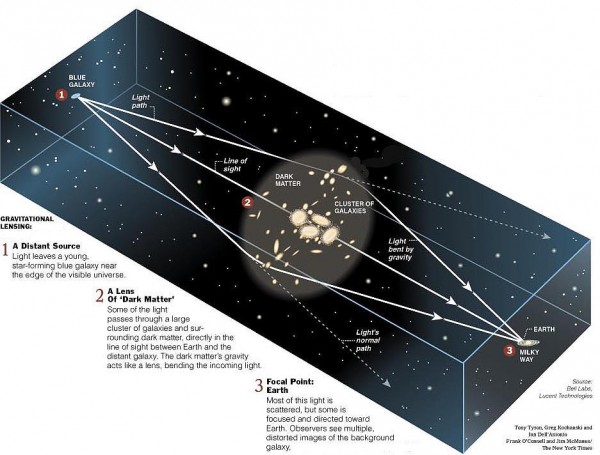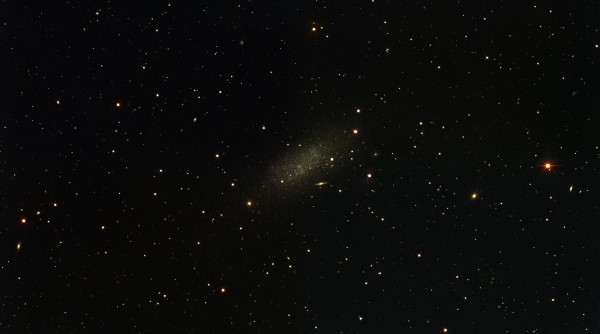“Two qualities are indispensable: first, an intellect that, even in the darkest hour, retains some glimmerings of the inner light which leads to truth; and second, the courage to follow this faint light wherever it may lead.” -Carl von Clausewitz
You've been hanging around here long enough that you know all about dark matter's successes, from the CMB to large-scale-structure to gravitational lensing. On the largest scales in the Universe, there's no alternative that even comes close to working, unless you also include dark matter!
 Image credit: Tony Tyson, Greg Kochanski and Ian Dell’Antonio; Frank O’Connell and Jim McManus / NYT.
Image credit: Tony Tyson, Greg Kochanski and Ian Dell’Antonio; Frank O’Connell and Jim McManus / NYT.
But what about the smallest scales? You see, one of the biggest problems with dark matter is that it predicts a very large number of very small galaxies, both as satellites around large galaxies and also as lone structures in intergalactic space. The ones we've been able to find are simply too few and too large to match up with what we see.
 Image credit: P. Massey / Lowell Observatory and K. Olsen / NOAO / AURA / NSF, via http://www.noao.edu/image_gallery/html/im1098.html.
Image credit: P. Massey / Lowell Observatory and K. Olsen / NOAO / AURA / NSF, via http://www.noao.edu/image_gallery/html/im1098.html.
But is it possible that they're out there, and we simply haven't been looking with the sensitivity necessary to find them? Not only is that possible, but just a few years after discovering the smallest mini-galaxies as satellites of the Milky Way, a new technique may have just uncovered the first intergalactic dwarfs predicted by dark matter!

Incredibly good stuff!! And along the way you supply answers to questions I've had for a long time (eg. escape velocity from a galaxy). Both your summaries and your expositions (especially) are just excellent. Many thanks.
Myself, I'm not in any doubt about dark matter's existence, because [breaking the no-selfie rule:] my combinatorial analysis of all possible inhabitants of the finite geometric (Clifford) algebra G(4,0) over Zed3 = {0,1,2} --> {0,1,-1}, dark matter as a 90o rotation of normal matter's substrate is right there. See TauQuernions.org if you want more.
Re the seven faint galaxies on the outskirts of M101, are we able to tell whether these objects are roughly in the plane of the big galaxy? I would imagine that would be a clue as to whether they are satellite galaxies or not.